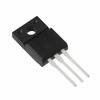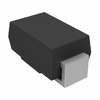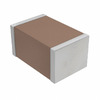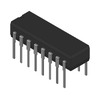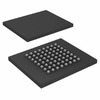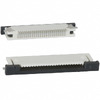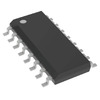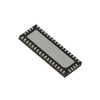Comprehensive Guide to the MMBT2222A NPN Transistor
The MMBT2222A transistor is a versatile NPN component widely recognized for its efficiency in medium power amplification and switching applications. Capable of handling collector currents up to 600mA, it is a staple in many electronic designs. In this article, we dig into the MMBT2222A's pin configuration, datasheet insights, substitutes, and practical applications. In addition, we explore its compatibility with other electronic components like resistors, capacitors, and integrated circuits, offering a comprehensive view of its integration into various projects. This guide will enhance your understanding of the MMBT2222A's potential in modern circuitry.Catalog

Pin Configuration
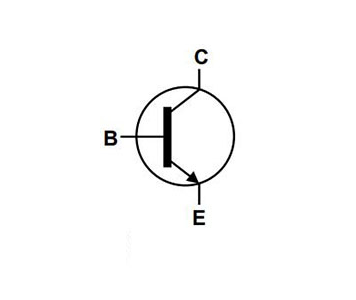
|
Pin Number |
Pin Name |
Description |
|
1 |
Emitter |
Current flows out through Emitter |
|
2 |
Base |
Controls the biasing of the Transistor |
|
3 |
Collector |
Current flows in through Collector |
Overview of MMBT2222A
The MMBT2222A is a versatile NPN transistor widely used in various electronic circuits due to its adaptability and reliable performance. It operates as a switch, transitioning between reverse-biased and forward-biased states depending on the signal applied to its base pin. When the base pin is grounded, the transistor blocks current flow between the collector and emitter, resembling an open switch. Conversely, providing a signal to the base enables current flow, effectively closing the circuit. This ultimate operation makes the MMBT2222A a cornerstone in digital applications and control mechanisms within electrical engineering.
One of the standout features of the MMBT2222A is its high maximum gain of 300, making it well-suited for signal amplification tasks. This gain allows it to amplify input signals effectively with minimal distortion, a required characteristic in audio and signal processing applications. Understanding the relationship between gain and input signals is key to optimizing the performance of amplifiers and oscillators. By carefully managing this parameter, you can achieve precise signal control, paving the way for robust circuit designs tailored to specific requirements.
The MMBT2222A also boasts robust operational capabilities, including a continuous collector current rating of 600mA and a peak of 800mA, allowing it to handle moderate loads with ease. Its maximum voltage rating of 40V provides clear guidelines for integrating compatible components into circuit designs. For safe operation, maintaining the base pin's current below 5mA is serious, emphasizing the need for thoughtful circuit design practices such as incorporating current-limiting resistors. These features, combined with effective heat management and careful monitoring under varying conditions, highlight the transistor’s reliability and versatility across a wide range of applications.
CAD Model
Symbol
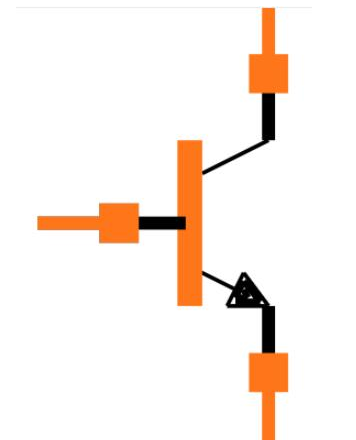
Footprint

3D Model
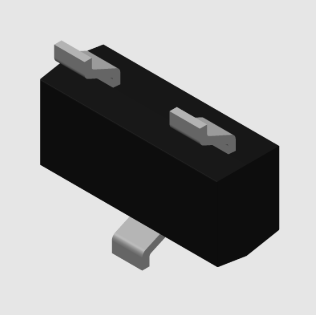
Features
|
Feature |
Description |
|
Construction |
Epitaxial Planar Die |
|
Low Saturation Voltage |
VCE (sat) < 300mV @ 150mA |
|
Complementary PNP Type |
MMBT2907A |
|
Applications |
Ideal for Low Power Amplification and Switching |
|
Environmental Compliance |
Totally Lead-Free & Fully RoHS Compliant (Notes 1
& 2) |
|
Eco-Friendly Design |
Halogen- and Antimony-Free, “Green” Device (Note 3) |
Technical Specification
|
Type |
Parameter |
|
Lifecycle Status |
Obsolete |
|
LAST SHIPMENTS |
Last Updated: 3 days ago |
|
Factory Lead Time |
142 Weeks |
|
Contact Plating |
Tin |
|
Mount |
Surface Mount |
|
Mounting Type |
Surface Mount |
|
Package / Case |
TO-236-3, SC-59, SOT-23-3 |
|
Number of Pins |
3 |
|
Supplier Device Package |
SOT-23-3 |
|
Weight |
59.987591mg |
|
Collector-Emitter Breakdown Voltage |
40V |
|
Current - Collector (Ic) (Max) |
1A |
|
Number of Elements |
1 |
|
hFE (Min) |
100 |
|
Operating Temperature |
150°C TJ |
|
Packaging |
Tape & Reel (TR) |
|
Published |
2016 |
|
Moisture Sensitivity Level (MSL) |
1 (Unlimited) |
|
Termination |
SMD/SMT |
|
Max Operating Temperature |
150°C |
|
Min Operating Temperature |
-55°C |
|
Voltage - Rated DC |
40V |
|
Max Power Dissipation |
300mW |
|
Current Rating |
500mA |
|
Frequency |
300MHz |
|
Base Part Number |
MMBT2222 |
|
Polarity |
NPN |
|
Voltage |
40V |
|
Element Configuration |
Single |
|
Current |
6A |
|
Power Dissipation |
350mW |
|
Power - Max |
350mW |
|
Gain Bandwidth Product |
300MHz |
|
Transistor Type |
NPN |
|
Collector Emitter Voltage (VCEO) |
40V |
|
Max Collector Current |
600mA |
|
DC Current Gain (hFE) (Min) @ Ic, Vce |
100 @ 150mA 10V |
|
Current - Collector Cutoff (Max) |
10nA ICBO |
|
Vce Saturation (Max) @ Ib, Ic |
1V @ 50mA, 500mA |
|
Voltage - Collector Emitter Breakdown (Max) |
40V |
|
Max Frequency |
300MHz |
|
Max Breakdown Voltage |
40V |
|
Frequency - Transition |
300MHz |
|
Collector Base Voltage (VCBO) |
75V |
|
Emitter Base Voltage (VEBO) |
6V |
|
Height |
1mm |
|
Length |
3.05mm |
|
Width |
1.4mm |
|
REACH SVHC |
Unknown |
|
Radiation Hardening |
No |
|
RoHS Status |
RoHS Compliant |
|
Lead Free |
Lead Free |
Mechanical Data
|
Attribute |
Description |
|
Case |
SOT23 |
|
Case Material |
Molded Plastic, "Green" Molding Compound; UL
Flammability Classification Rating 94V-0 |
|
Moisture Sensitivity |
Level 1 per J-STD-020 |
|
Terminals |
Matte Tin Finish; Solderable per MIL-STD-202, Method 208 |
|
Weight |
0.008 grams (Approximate) |
Substitutes
• 2N2222A
• BC549
• BC639
• 2N2222
• 2N2369
• 2N3055
• 2N3906
• 2SC5200
Applications
Within the diverse field of electronic engineering, driver modules demonstrate their vast adaptability. Applications permeate numerous areas, such as relay and LED driver systems. Their prowess is highlighted by their capacity to manage current loads up to 600mA, showcasing their potential for intricate power management. This ability not only upholds ultimate operations but also empowers complex configurations, including those for motor speed regulation and inverter circuitry.
Relay and LED Drivers
In relay and LED deployments, the use of driver modules stands out for enabling precise control of electronic components, ensuring efficient and reliable operation. Deep knowledge of these drivers' functionalities and boundaries can considerably enhance their use. For example, understanding switching behaviors can prevent problems like electromagnetic interference (EMI), which may adversely affect circuit performance. Crafting well-designed driver circuits can facilitate smoother transitions and reduce voltage fluctuations, aligning with successful common practices in electronics design.
Current Switching Applications
The capability to control currents up to 600mA fosters a wide range of uses, encompassing automation in both industrial arenas and contemporary consumer electronics. These high-performance drivers are about more than current management, requiring attention to thermal regulation and stability. Generally, tailored cooling methods, strategic circuit designs, and protective elements enhance the system's long-term effectiveness and functionality. Such insights often derive from industry exposure, where the practical application of driver modules informs progressive design strategies.
Motor Speed Control and Inverter Circuits
For motor speed regulation, driver modules play a basic role. Intelligent driver circuitry modifies power inputs to motors, offering performance adaptability and energy savings. Varying the duty cycle in pulse-width modulation (PWM) techniques, for instance, reflects a broadly embraced approach that has proven successful in obtaining desired speed dynamics for various motor kinds. These concepts extend to inverter systems, where converting DC to AC power involves strict control. This meticulous regulation is useful in different sectors, from renewable energy development to advanced power supply setups. A core insight from multiple implementations is the value of customizing driver circuits for specific load scenarios, leading to robust solutions that cater to distinct operational challenges.
Darlington Pairs and Complementary Applications
The creation of Darlington pairs illustrates yet another advanced application of driver modules. These pairs enhance current capability efficiently, serving major roles in managing higher power tasks. This arrangement highlights the benefit of understanding component traits, resulting in inventive solutions that satisfy high-performance standards while retaining effectiveness.
Switching Time Evaluation Circuits
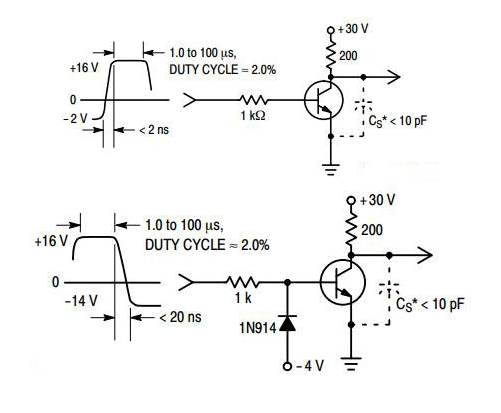
Similar Characteristics
|
Part Number |
Manufacturer |
Mount |
Package / Case |
Polarity |
Collector-Emitter Breakdown
Voltage |
Voltage - Collector-Emitter
Saturation (Max) |
Max Collector Current |
Frequency - Transition |
Collector-Emitter Saturation
(Vce(sat)) |
hFE Min |
Max Power Dissipation |
|
MMBT2222A |
ON Semiconductor |
Surface Mount |
TO-236-3, SC-59, ... |
NPN |
40 V |
300 mV |
600 mA |
300 MHz |
300 mV |
100 |
300 mW |
|
MMBT4401-7-F |
Diodes Incorporated |
Surface Mount |
TO-236-3, SC-59, ... |
- |
40 V |
750 mV |
600 mA |
- |
750 mV |
100 |
350 mW |
|
MMBT4401 |
ON Semiconductor |
Surface Mount |
TO-236-3, SC-59, ... |
- |
40 V |
750 mV |
600 mA |
- |
750 mV |
100 |
350 mW |
|
KST4401MTF |
ON Semiconductor |
Surface Mount |
TO-236-3, SC-59, ... |
- |
40 V |
750 mV |
600 mA |
250 MHz |
750 mV |
100 |
300 mW |
|
KST2222AMTF |
ON Semiconductor |
Surface Mount |
TO-236-3, SC-59, ... |
NPN |
40 V |
750 mV |
600 mA |
250 MHz |
750 mV |
100 |
350 mW |
Dimension
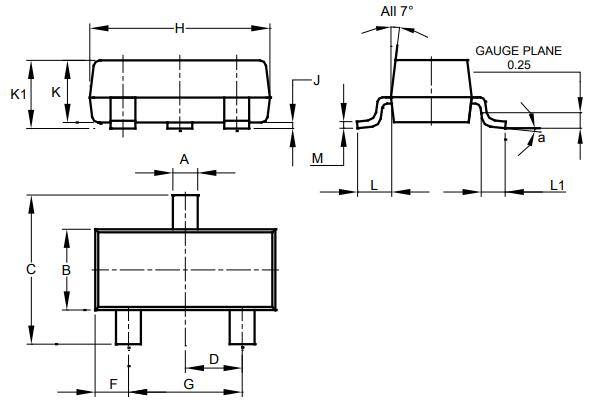
Manufacturer
On Semiconductor excels in the field of energy-efficient technology, continuously enhancing its product offerings to meet the demands of the modern world. The company's focus on sustainability is reflected through its array of products designed to enhance energy efficiency in several sectors like automotive, industrial, and consumer electronics. This diverse assortment not only highlights their technical expertise but also emphasizes a commitment to minimizing global carbon emissions.
The company's global reach is expanded through its strategically located facilities across the Americas, Europe, and the Asia Pacific. These sites are more than just operational centers; they are used for optimizing supply chain management. By utilizing local talent and resources, On Semiconductor guarantees that product distribution is both effective and adaptable. Additionally, the geographical variety of these facilities assists in reducing the risks associated with local disturbances, thus maintaining a steady product supply.
Datasheet PDF
MMBT2222A Datasheets:
PN,MMBT,PZT2222A Datasheet.pdf
MMBT4401-7-F Datasheets:
MMBT4401 Datasheets:
About us
ALLELCO LIMITED
Read more
Quick inquiry
Please send an inquiry, we will respond immediately.
Frequently Asked Questions [FAQ]
1. What is MMBT2222A used for?
The MMBT2222A is a compact SOT-23 package component that excels in surface-mounted applications. It is engineered for both medium power amplification and switching tasks, making it adaptable for diverse electronic circuits. When integrating the MMBT2222A into your designs, careful attention should be paid to thermal management, especially given its power-handling capabilities. Notably, historical cases highlight that efficient heat dissipation can enhance the longevity and reliability of the component in actual scenarios. The balance between performance and thermal considerations reflects a commitment to quality in electronic design.
2. What is the voltage gain of MMBT2222A?
Understanding the voltage gain of the MMBT2222A involves examining the relationship outlined by equation 20log (Vout/Vin). A voltage gain of 60dB equates to a threefold increase in signal strength, corresponding to a factor of 1000. This scenario emphasizes the necessity of matching input-output impedance to uphold signal integrity and avoid unwanted distortions. Grasping these concepts aids in refining circuit designs that demand excellence in amplification characteristics. Enhanced comprehension of these principles is beneficial for you aiming to achieve optimal performance in your projects.

Everything You Need to Know About Arduino Uno Rev3
on November 20th
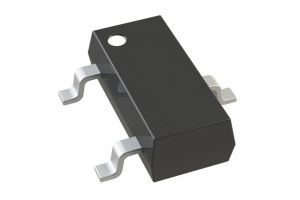
Why Choose PESD1 for Automotive Circuits
on November 20th
Popular Posts
-

What is GND in the circuit?
on January 1th 3291
-

RJ-45 Connector Guide: RJ-45 Connector Color Codes, Wiring Schemes, R-J45 Applications, RJ-45 Datasheets
on January 1th 2826
-

Understanding Power Supply Voltages in Electronics VCC, VDD, VEE, VSS, and GND
on November 20th 2687
-

Fiber Connector Types: SC Vs LC And LC Vs MTP
on January 1th 2271
-

Comparison Between DB9 and RS232
on January 1th 1891
-

What Is An LR44 Battery?
Electricity, that ubiquitous force, quietly permeates every aspect of our daily lives, from trivial gadgets to life-threatening medical equipment, it plays a silent role. However, truly grasping this energy, especially how to store and efficiently output it, is no easy task. It is against this background that this article will focus on a type of coin cell battery that may seem insignificant on the...on January 1th 1849
-

What Is RF and Why Do We Use It?
Radio Frequency (RF) technology is a key part of modern wireless communication, enabling data transmission over long distances without physical connections. This article delves into the basics of RF, explaining how electromagnetic radiation (EMR) makes RF communication possible. We will explore the principles of EMR, the creation and control of RF signals, and their wide-ranging uses. The article ...on January 1th 1818
-

Understanding the Fundamentals:Inductance Resistance, andCapacitance
In the intricate dance of electrical engineering, a trio of fundamental elements takes center stage: inductance, resistance, and capacitance. Each bears unique traits that dictate the dynamic rhythms of electronic circuits. Here, we embark on a journey to decipher the complexities of these components, to uncover their distinct roles and practical uses within the vast electrical orchestra. Inductan...on January 1th 1817
-

CR2430 Battery Comprehensive Guide: Specifications, Applications and Comparison to CR2032 Batteries
What is CR2430 battery ?Benefits of CR2430 BatteriesNormCR2430 Battery ApplicationsCR2430 EquivalentCR2430 VS CR2032Battery CR2430 SizeWhat to look for when buying the CR2430 and equivalentsData Sheet PDFFrequently Asked Questions Batteries are the heart of small electronic devices. Among the many types available, coin cells play a crucial role, commonly found in calculators, remote controls, and ...on January 1th 1806
-

Comprehensive guide to hFE in transistors
Transistors are crucial components in modern electronic devices, enabling signal amplification and control. This article delves into the knowledge surrounding hFE, including how to select a transistor's hFE value, how to find hFE, and the gain of different types of transistors. Through our exploration of hFE, we gain a deeper understanding of how transistors work and their role in electronic circu...on November 20th 1796











